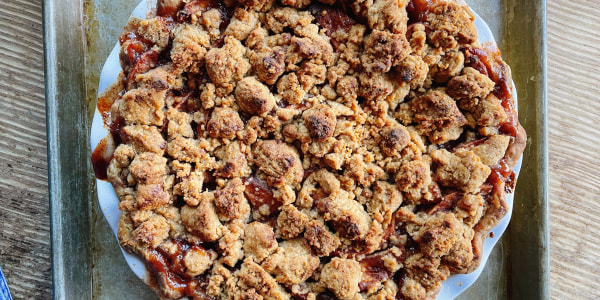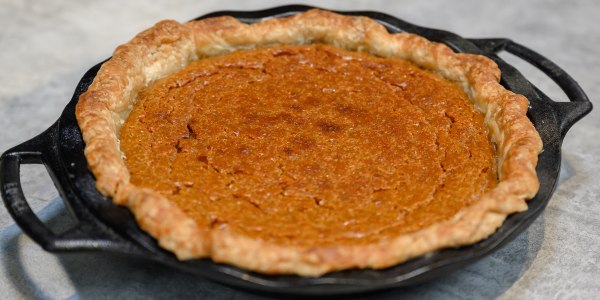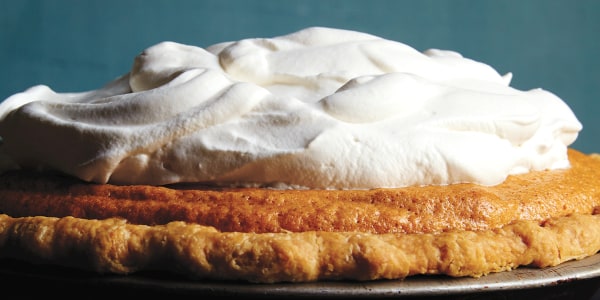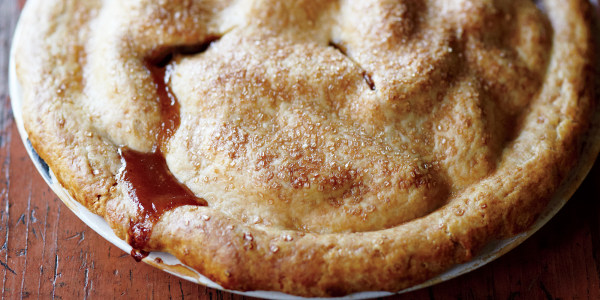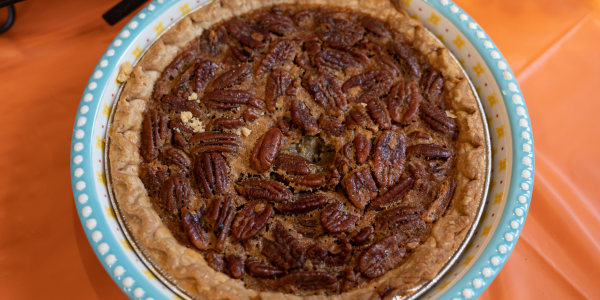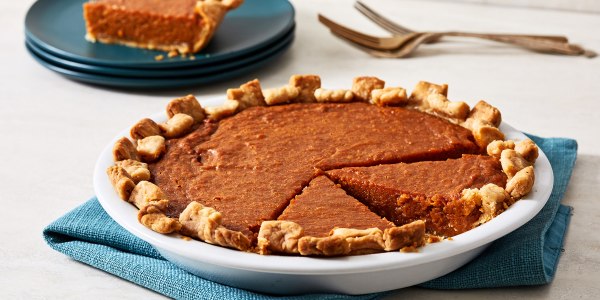The key to any good pie starts with the dough. In order to achieve tender, flaky and golden-brown pie crust, there are a few simple techniques and tips to follow.
Basic pie dough contains few ingredients: flour, water, sugar, salt and butter (though these ingredients can be swapped for others, depending on your recipe). Many people like to sub in vodka or vinegar to their pastry to make the crust more tender, but I'm going to make a controversial statement and say those things are not necessary. If you have the proper dough technique down, you don't need anything other than water to make a delicious crust.
Important tips to remember:
Make it cold, bake it hot: This saying should be ingrained in your brain. All of your ingredients should be cold when beginning to make the dough. If your butter or lard is too warm, it will melt into the flour and your dough will become tough and prevent those buttery, flaky layers. Once your pie dough is prepared, place the entire rolled out pie shell and pie dish in the fridge or freezer for at least 20 to 30 minutes before baking. This will help to ensure the fat in your dough won't melt too quickly when in the oven.
Temperature: Always place your chilled pie into a preheated oven! The high heat will blast the crust and seal in the shape you've created. Too low of a temp will allow the pastry to shrink and lose its shape quickly. After about 10 to 15 minutes at 425 F, lower your oven to 350 F and allow the pastry to continue baking until evenly golden-brown.
- Time: Allow your pie crust to bake all the way through. Most people pull pies out of the oven at the first sign of browning. Pie dough should be a deep golden-brown, not pale in color. The deep golden color ensures all of the water has evaporated from the dough, creating flaky, delicious layers.
Make the dough
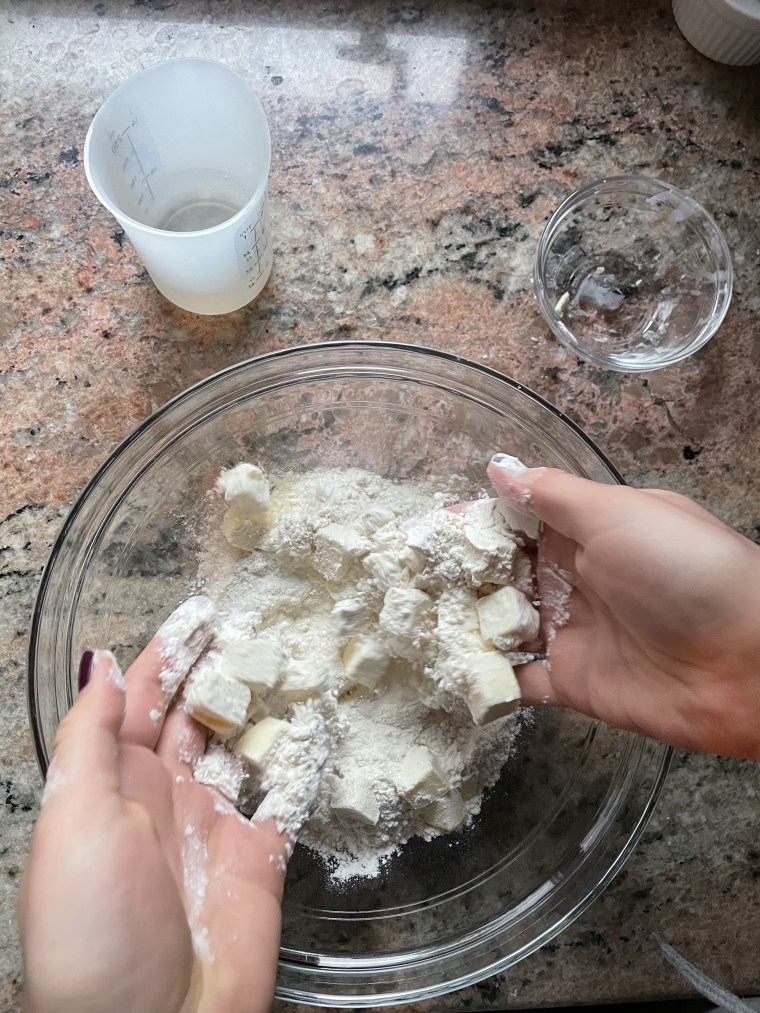
While a food processor or pastry blender can certainly be helpful, you can do without them. Machines can over-process your butter. We're looking for quarter-sized pieces, not pea-sized!
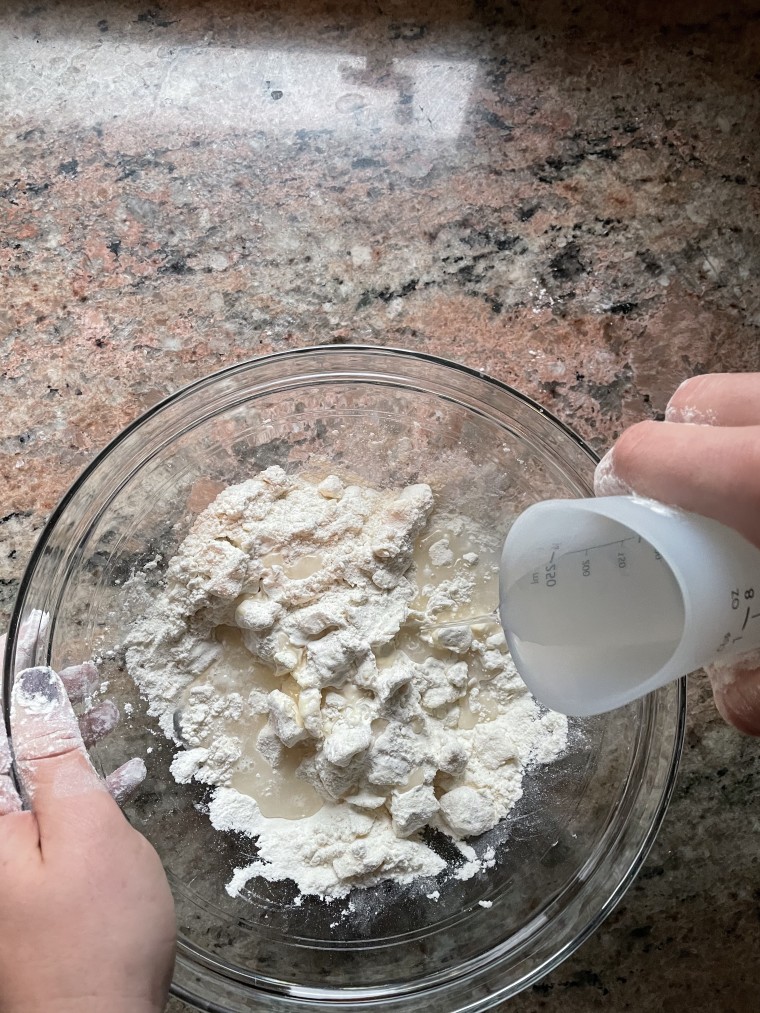
When adding liquid to your dough, you want to add it in batches to avoid over-hydration of your dough. Too much water will develop too much gluten, leading to a tough pie dough.
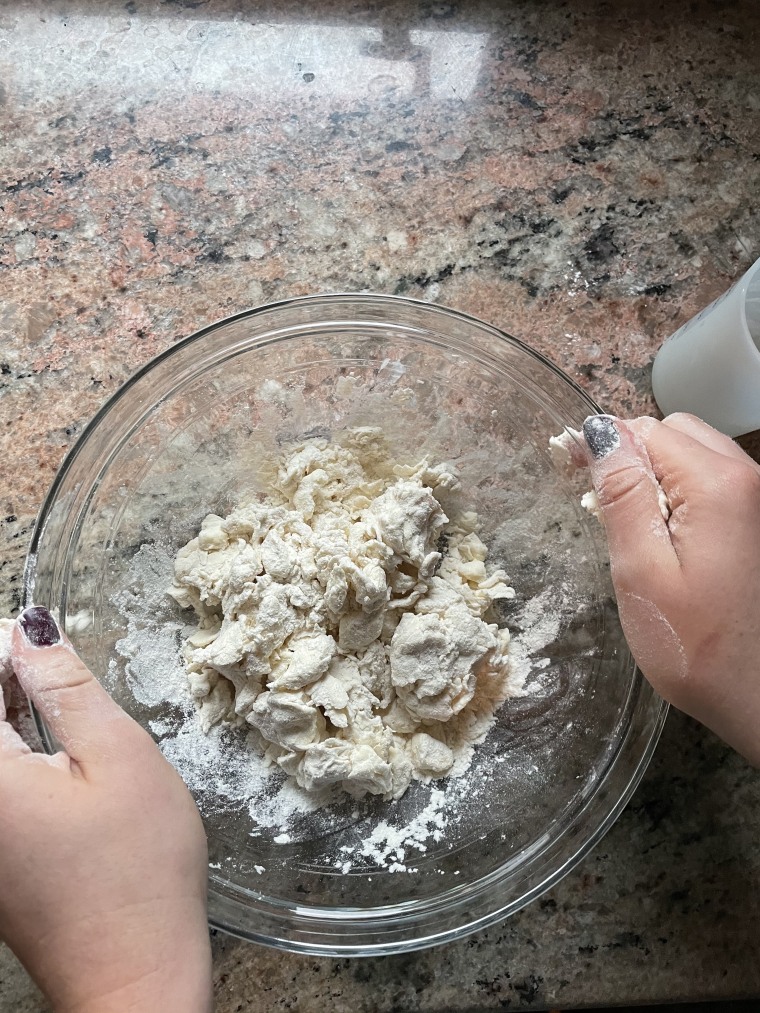
You want to add just enough water so that when you squeeze the dough in your hand, you're able to form it into a rough ball.
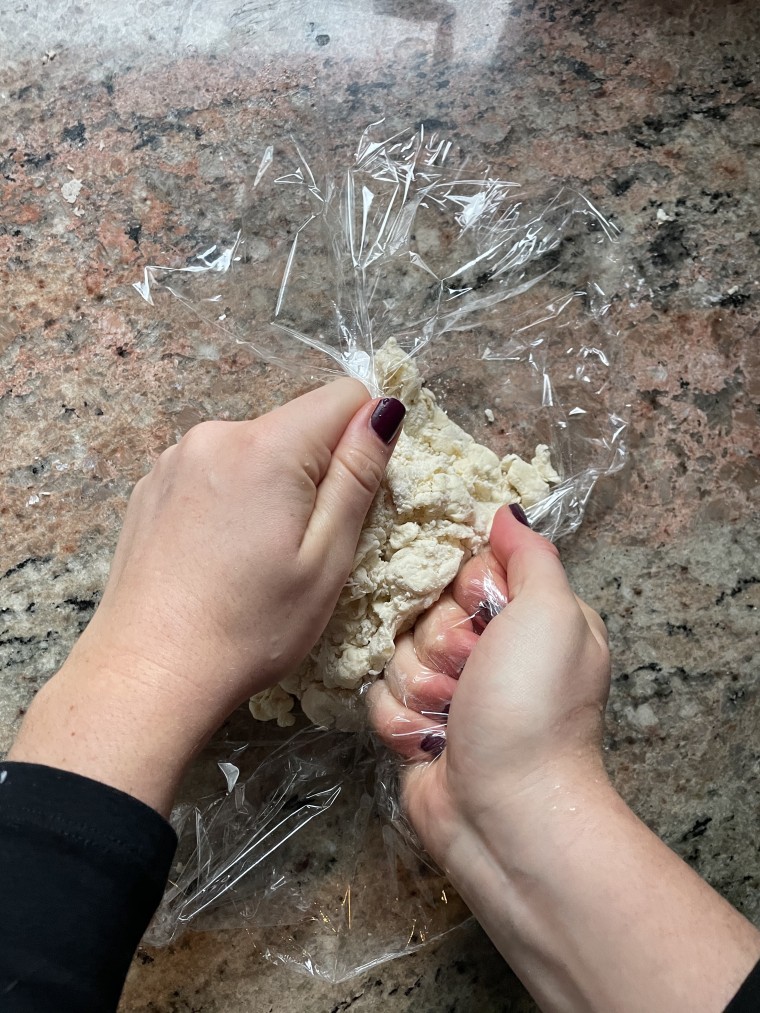
Let it rest
Once the dough is formed and still has some shaggy bits, it needs to rest and chill before being rolled out. Transfer the dough to a piece of plastic wrap and use the edges of the plastic to shape it into a circle.
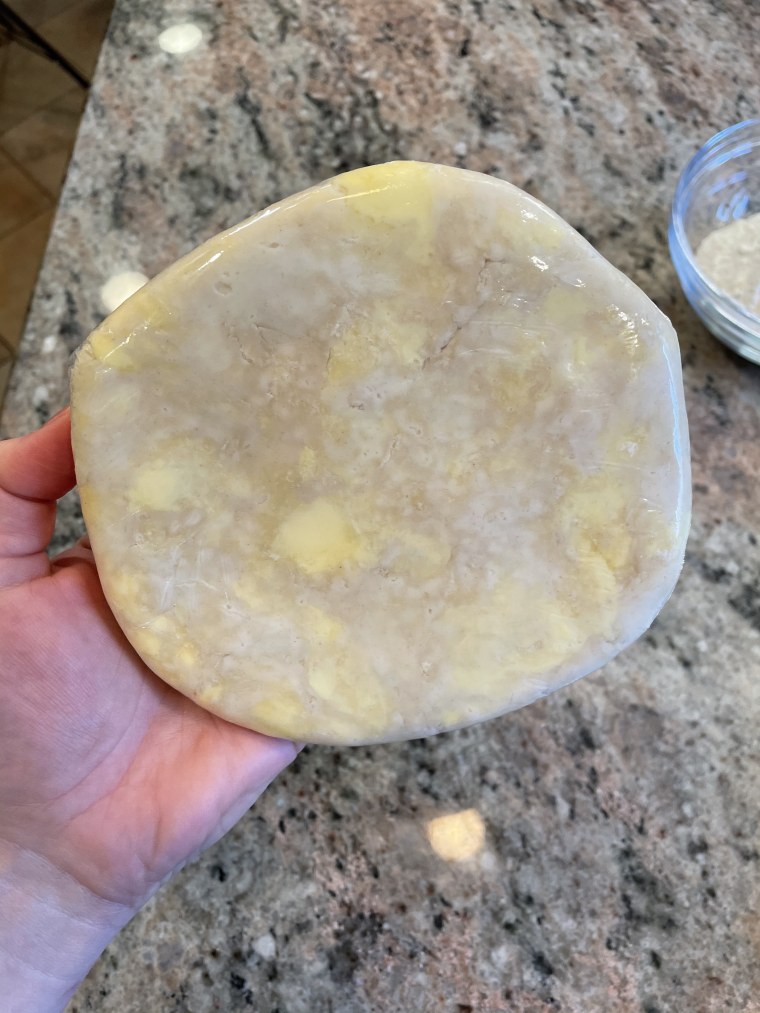
Wrap completely in plastic wrap and chill in the fridge for at least an hour. This allows the butter to firm up and the gluten to relax.
Shape the dough
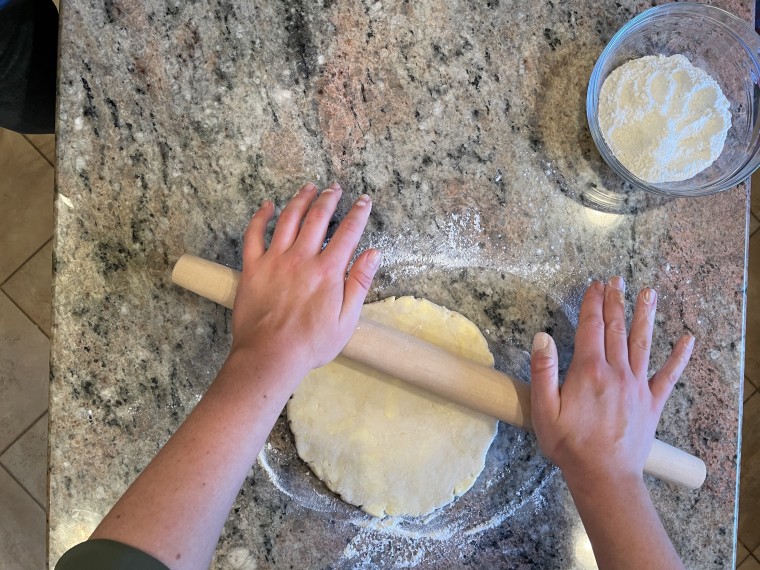
Make sure your surface is lightly dusted with flour. Begin by applying even pressure to the center of your dough and work outwards in one direction with your rolling pin. Rotate the dough 90 degrees and repeat.
Constantly moving the dough will allow you to create an even thickness while also making sure it does not stick to your surface.
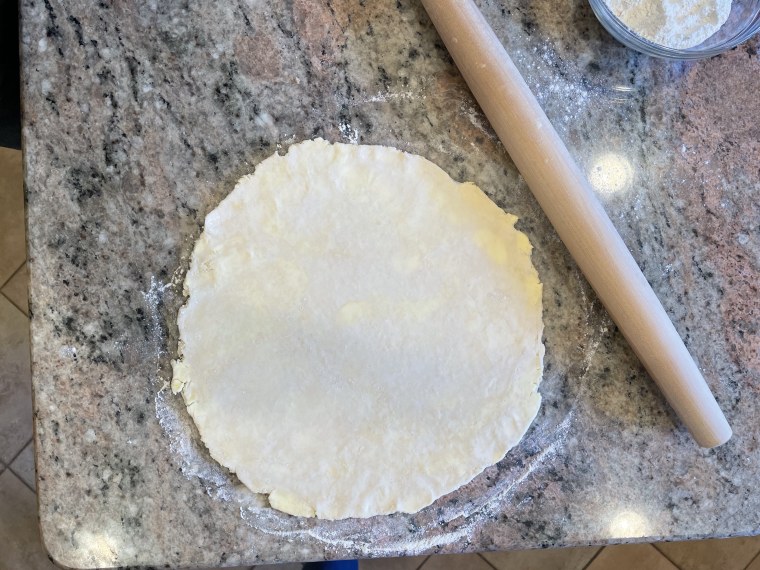
Before transferring your dough, invert the pie dish on top of the rolled out dough to check your measurements.
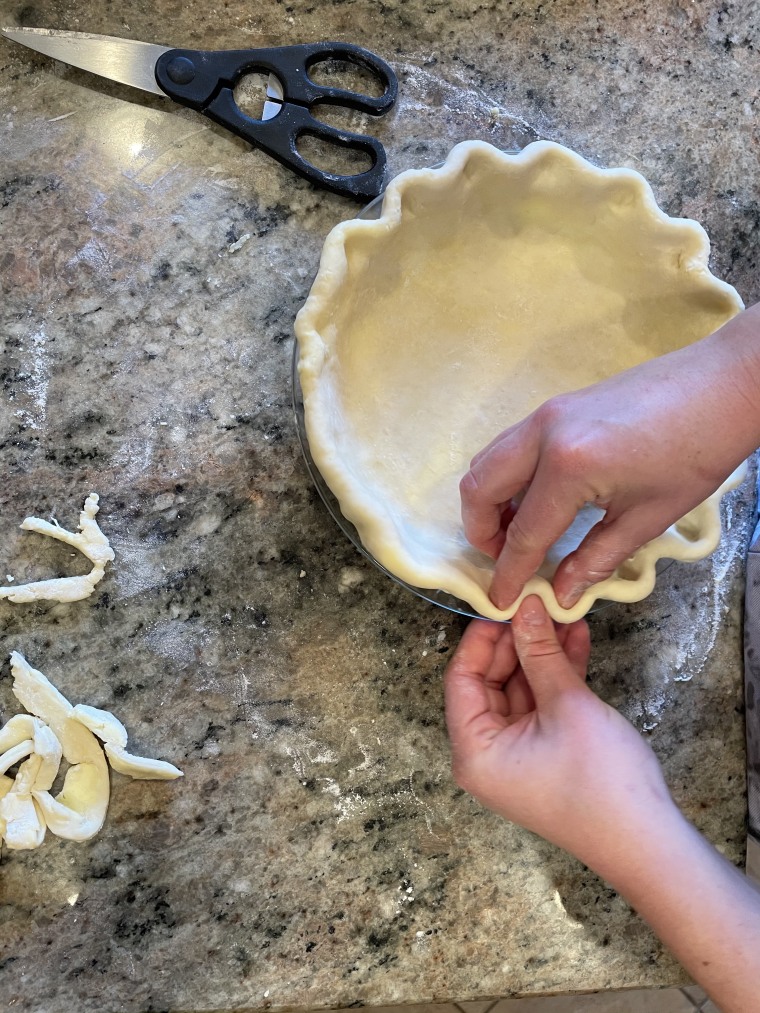
Tip: Your dough should be rolled about 4 inches larger than the circumference of the pie dish. This will allow you enough room to gently press the dough into the edges of the pie plate and have excess to create an edge for crimping.
Bake the crust
If you're making a fruit-filled pie, such as apple, skip the blind-baking instructions and proceed as directed in the recipe.
To blind bake, place a piece of parchment paper in your chilled pie shell and fill with baking beans or pie weights. Bake in an oven preheated to 375 F for 25 to 30 minutes. Carefully remove the pie weights and return shell to the oven until the entire crust is golden-brown. Remove from the oven and cool completely before filling.
Now that you've got the crust down, here are some of our favorite fall pie recipes:
Related:
